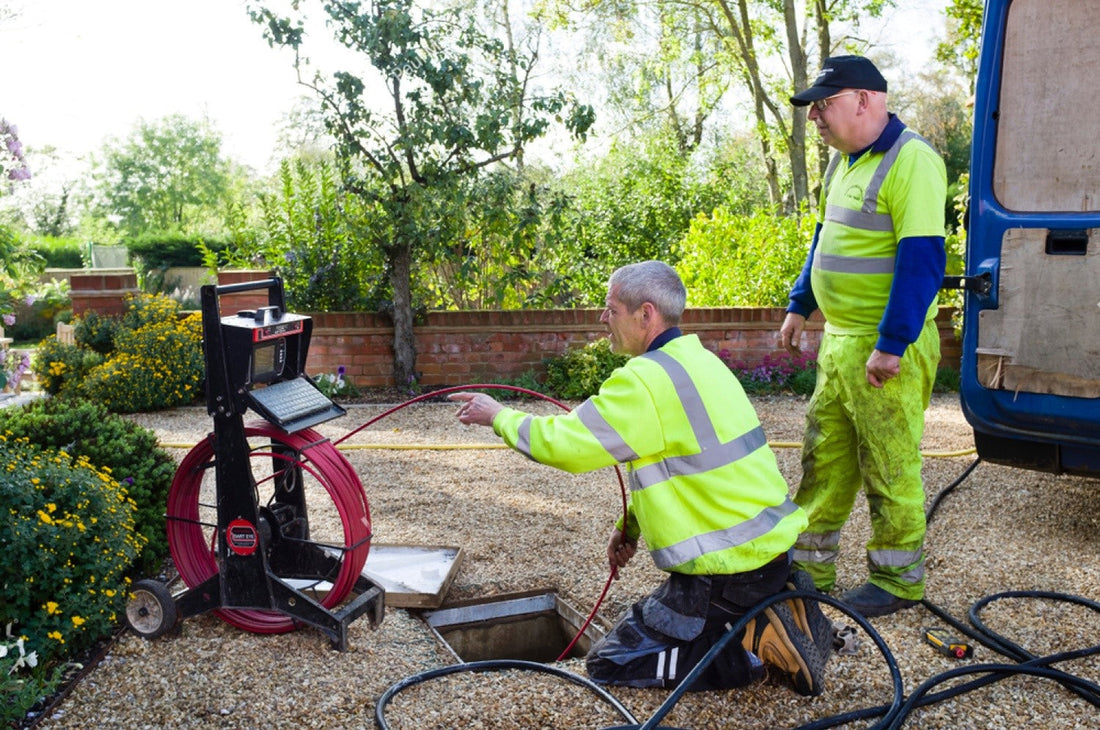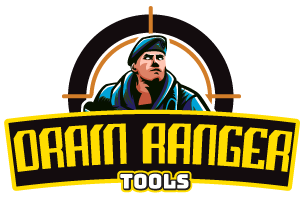
Why Modular Tools and Cameras Are the Future of Plumbing Work
Share
The use of modular tools and cameras represents the future practices regarding plumbing, since they enhance accuracy and versatility, while minimizing labor costs and disruptions. Here, you can find a detailed discussion on why these tools and cameras are going to shape the plumbing work.
Rather than carrying a truck full of single-use tools, the use of a modular system empowers a central body, which can be equipped with multiple attachments for various tasks. The non-invasive inspections fostered by these tools help to deal with complexities in the plumbing systems in commercial and residential settings.
Let’s find out what plumbing cameras and modular tools have revolutionized plumbing mechanisms by boosting accuracy, efficiency, and ROI.
What Are Modular Plumbing Tools?
Modular plumbing tools stand for an advanced system, where the core plumbing components, such as valves, handles, and tubing, share a common proportion. It allows a single kit providing a wider range of configurations, while the standardization program reduces builders’ complexity, since a single set of parts can be used for bathrooms or kitchens.
The kit involves several basic plumbing tools, such as a pipe wrench, a basic wrench, tongue-and-groove pliers, a plunger, and others, and they allow for easily combined or swapped components to develop various plumbing setups. The modularity enhances efficiency, while the flexibility secures a diverse range of systems and fixtures.
|
Feature |
Traditional Tools |
Modular Plumbing Tools |
|
Fixed design |
Yes |
No |
|
Interchangeable parts |
No |
Yes |
|
Portability |
Bulky |
Compact |
|
Customizable per job |
No |
Yes |
|
Long-term cost efficiency |
Lower |
Higher ROI |
Table 1: Traditional vs Modular Tools
The Role of Inspection Cameras in Plumbing Work
Here, you can find some key roles of inspection cameras in plumbing work, such as minimizing disruption, precision in problem detection, enhancing safety and efficiency, and supporting preventive maintenance.
1. Precision in Problem Detection
The inspection cameras help identify pinpoint issues, such as pipe damage, blockages, or leaks, without any time-consuming excavations. These cameras offer real-time visuals inside pipes and further improve the diagnostic accuracy.
2. Minimizing Disruption
In cases of traditional plumbing inspections, technicians often need to dig into the structure. By using plumbing cameras, plumbers can easily assess the condition of pipes with minimal disturbance, which also reduces costs and saves time on a significant scale.
3. Enhancing Efficiency and Safety
Inspection cameras provide clean and clear images of hidden areas, which are tough to identify manually. They also ensure safety for plumbers, as they do not need to enter risky areas or follow any invasive method.
4. Supporting Preventive Maintenance
For routine maintenance, plumbing cameras are valuable to check pipe health. They also help identify early signs of corrosion or root intrusion, enabling real-time interventions, which further enhance the lifespan of plumbing systems and prevent expensive damage repair.
|
Camera Type |
Best Use Case |
Key Feature |
|
Push Camera Systems |
Residential drain inspections |
Flexibility, image clarity |
|
Modular Reel Systems |
Large-scale/commercial jobs |
Expandability, longer reach |
|
Self-Levelling Cameras |
Accurate orientation |
Auto-levelling footage |
|
Wi-Fi Enabled Cameras |
Real-time client reporting |
Connectivity, storage capabilities |
Table 2: Types of Plumbing Cameras & Best Use Cases
Real-World Applications and Case Scenarios
Here you can find 3 real-life scenarios, based on the application of modular tools and cameras.
Scenario 1: Diagnosing Sewer Line Blockages with Modular Cameras
Modular cameras are one of the must-have plumbing tools, since they provide various solutions during the diagnosis of sewer line blockages. While traditional push cameras cannot be used in every situation or plumbing zones, these cameras easily fit different pipe conditions and diameters. The flexibility of its use ensures clear visuals in longer or complex pipelines.
Along with plumbing press tools and plumbing hand tools, plumbers prefer to carry modular cameras, since they can easily use them to capture detailed images of root intrusion or particular damage in different sections of pipes. Through this, plumbers experience a better diagnosis, which prevents long-term excavation and the risks of misidentification.
Scenario 2: Switching Tool Heads Between Fittings and Drains On-Site
The specialty of plumbing tools, when put together in a form of kit, lies in the fact that the on-site adaptability becomes a major advantage. Considering must-have plumbing tools, a plumber can encounter multiple challenges, like clearing small sink drains or addressing larger outdoor pipes.
Instead of carrying particular plumbing press tools or plumbing hand tools, modular systems allow plumbers to switch between different tool heads, whether it is a drain auger, wrench, or pipe cutter. It not only saves time and reduces the carrying load but is also cost-effective in nature. By customizing tools for different purposes, ensure operational efficiency and be valuable during emergency situations. It further streamlines a better workflow and improves customer satisfaction.
Scenario 3: Cutting Service Time by 1 Hour with Multi-Use Tool Systems
The multi-use approach of tools for plumbing, including the advanced and basic plumbing tools, deeply influences the plumbing service. For example, using a modular tool system, plumbers can reduce the working period by 1 hour on average. It has been achieved by reducing delays, mostly associated with swapping or searching for entire tools.
Extensions and interchangeable heads have made the job easier, while the individual use of tools for plumbing is time-consuming. The specialty of plumbing tools is considered under a unique periphery, while the efficiency boosts daily productivity, allowing plumbers to serve more clients.
However, instead of carrying a list of tools for plumbing, when plumbers carry modular plumbing tools, it also reduces their responsibility to carry various tools, which improves their efficiency and engagement.
How to Choose the Right Modular System
Choosing the appropriate modular plumbing system depends on the condition of the site, client requirements, and flexibility. First, you need to assess the types of drains, pipe size, and the frequency of tool changes required. A modular system with interchangeable heads, instead of a list of plumbing tools for individual needs, saves time on a significant scale, while the durability of materials secures long-term performance as well.
If the working area includes multiple sites, you need to consider portability and check the compatibility of cutting tools or inspection cameras. You also need to opt for several systems designed to reduce the overall service times, while evaluating after-sales support, overall cost-effectiveness, and the availability of spare parts, to ensure an adaptable and reliable solution, tailored to commercial plumbing and residential demands.
Summary
Modular plumbing tools refer to an innovative system, empowering standardized components that can be easily swapped, combined, and adapted for multiple plumbing applications. As a result, plumbers may work more efficiently with fewer tools and with greater flexibility and complexity. By identifying obstructions, leaks, or damage early on, they improve diagnostic accuracy, reduce disturbance, and aid preventive maintenance when used with inspection cameras.
Not sure about the utility and functions of modular tools and cameras? Visit our website to experience the best services at affordable prices.
Frequently Asked Questions
How Do Modular Inspection Cameras Reduce the Requirement for Plumbing Maintenance That Involves Noisy Pipe Excavation?
Without needless excavation or demolition, plumbers may detect obstructions, leaks, or corrosion in pipelines by inserting flexible, high-definition scopes into them using modular cameras.
Is It Possible for Modular Plumbing Tools to Accommodate Different Pipe Sizes and Materials?
Indeed, modular systems have detachable heads, grips, and attachments that can work with pipes of different diameters made of cast iron, copper, or PVC.
In What Ways Do Modular Tools Increase Productivity in Plumbing Emergencies?
In order to minimize downtime and eliminate the need to carry various single-use tools, plumbers can swiftly swap attachments, such as cutting heads or inspection tools.
How Can Plumbing Work Be Recorded Using Modular Cameras for Customer Transparency and Compliance?
These cameras frequently have wireless sharing and recording features, enabling plumbers to comply with regulations while giving clients unambiguous before-and-after proof.
